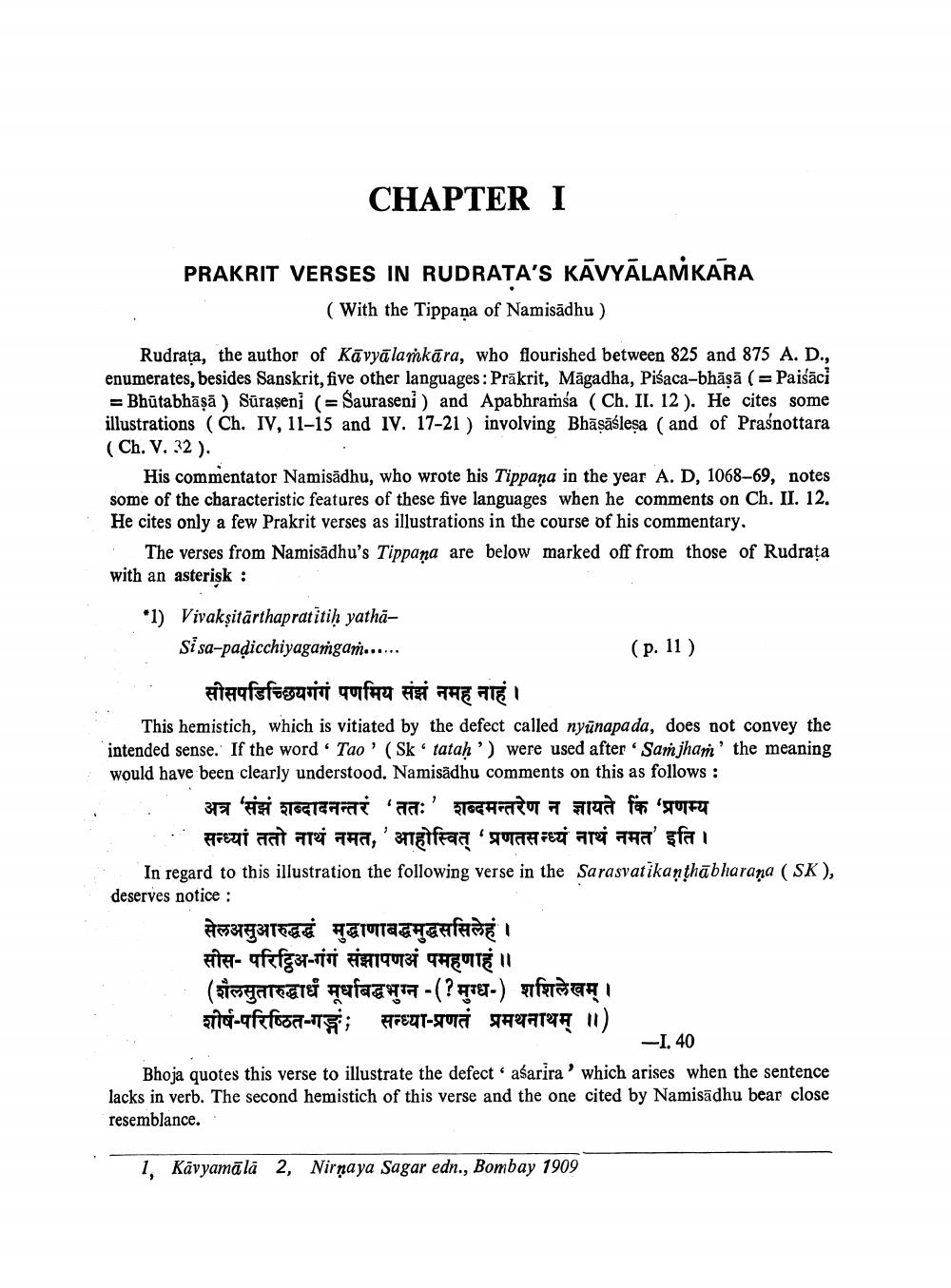________________
CHAPTER I
PRAKRIT VERSES IN RUDRATA'S KĀVYĀLANKARA
( With the Tippaņa of Namisādhu )
Rudrata, the author of Kā vyā lamkāra, who flourished between 825 and 875 A. D., enumerates, besides Sanskrit, five other languages: Prākrit, Māgadha, Pisaca-bhāsā ( = Paišāci
= Bhutabhasa ) Suraseni (= Sauraseni) and Apabhramsa (Ch. II. 12). He cites some illustrations (Ch. IV, 11-15 and IV. 17-21) involving Bhasaslesa (and of Prasnottara (Ch.V.32).
___His commentator Namisadhu, who wrote his Tippana in the year A. D, 1068-69, notes some of the characteristic features of these five languages when he comments on Ch. II. 12. He cites only a few Prakrit verses as illustrations in the course of his commentary,
The verses from Namisādhu's Tippana are below marked off from those of Rudrața with an asterisk :
*1) Vivakṣitārthapratitih yathāSisa-padicchiyagamgami......
(p. 11 ) सीसपडिच्छियगंगं पणमिय संझं नमह नाहं । This hemistich, which is vitiated by the defect called nyūnapada, does not convey the intended sense. If the word - Tao' (Sk ' tatah') were used after 'Samjhari' the meaning would have been clearly understood. Namisādhu comments on this as follows:
अत्र 'संझं शब्दादनन्तरं 'ततः' शब्दमन्तरेण न ज्ञायते कि 'प्रणम्य
सन्ध्यां ततो नाथं नमत,' आहोस्वित् 'प्रणतसन्ध्यं नाथं नमत' इति । In regard to this illustration the following verse in the Sarasvatikanthābharana (SK), deserves notice :
सेलअसुआरुद्धद्धं मुद्धाणाबद्धमुद्धससिलेहं। सीस- परिट्ठिअ-गंगं संझापण पमहणाहं॥ (शैलसुतारुद्धार्धं मूर्धाबद्धभुग्न -(? मुग्ध-) शशिलेखम् । शीर्ष-परिष्ठित-गङ्ग; सन्ध्या-प्रणतं प्रमथनाथम् ॥)
-1.40 Bhoja quotes this verse to illustrate the defect aśarira' which arises when the sentence lacks in verb. The second hemistich of this verse and the one cited by Namisadhu bear close resemblance..
1, Kavyamāla
2,
Nirnaya Sagar edn., Bombay 1909




